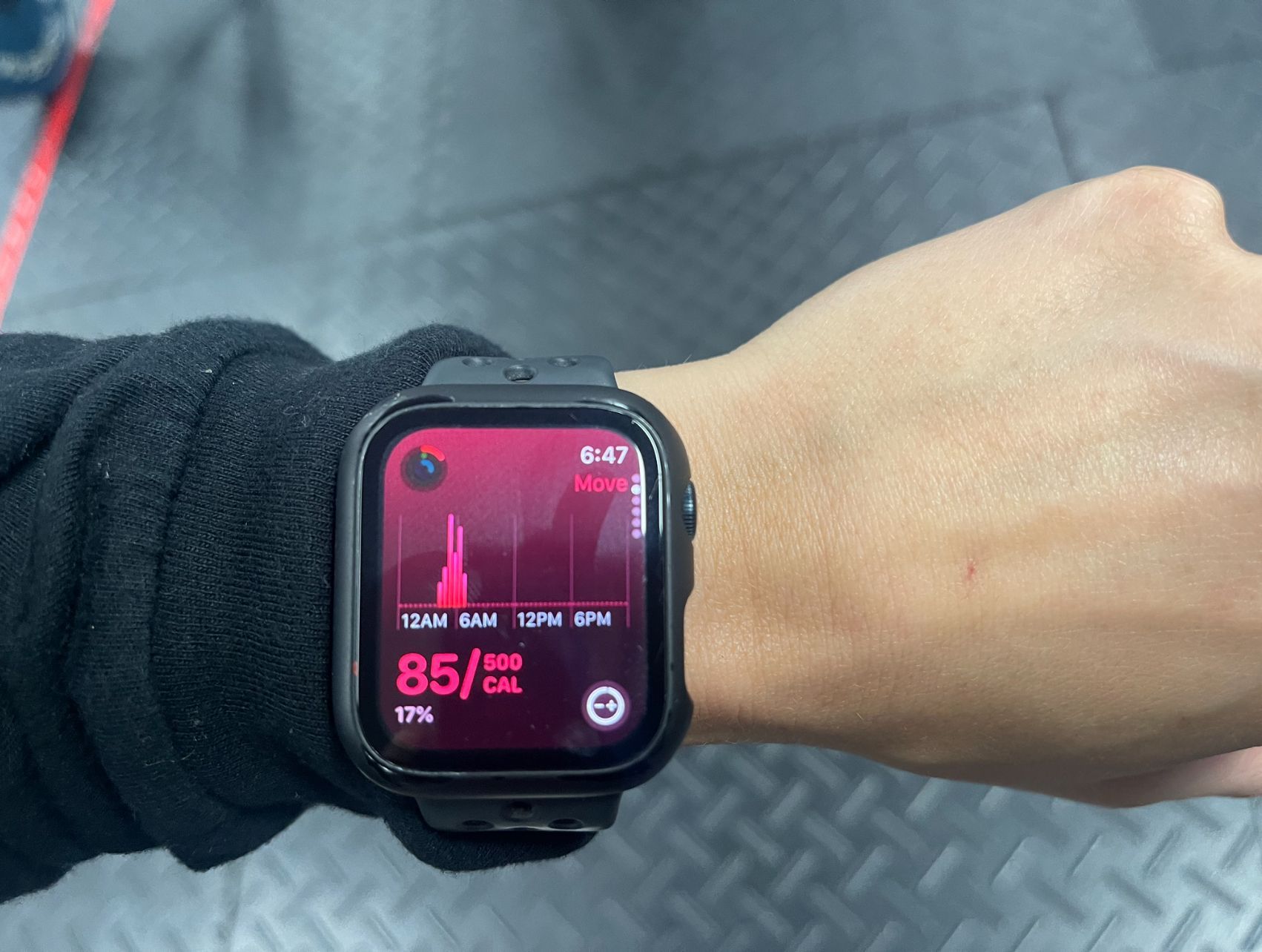Why Calories Burned Is The Worst Metric To Track

We can totally relate. Almost everyone who has access to a smart watch or
fitness tracker has at some point assessed the quality of a workout by the
number of calories burned.
You’ve pushed yourself to finish a difficult workout and that number is just
staring you in the face.
And you’re first thought is…that’s it?
Despite my best efforts, on a very regular basis I’ll hear someone comment
with a disappointing tone about the number of calories they just burned.
Fitness wearables on the whole are positive. These devices provide valuable
biofeedback and insights into our activity. People wearing fitness tracking
devices tend to focus on increasing their healthy activities. I’m a huge
advocate for heart-rate training and my intention with this post isn’t to
discourage the use of fitness tracking devices. I do however want to raise
public awareness that Calories Burned is the worst metric you could
track with your workouts.
Now that I’ve made my claim, here are the top 5 reasons why you should
stop paying attention to the number of calories burned in your workout.
Fitness Trackers Don’t Accurately Measure Energy Expenditure
In 2017, Stanford University studied the seven most popular fitness devices.
While six out of the seven measured heart rate within 5% accuracy, none of
the devices accurately measured energy expenditure (calories burned). The
most accurate device was off by 27% and the least accurate was off by 93%.
These devices are based on a formula that doesn’t take into account your
individual metabolic rate, the muscles you’re working or the weight you’re
using. In early 2024, we had someone wear two fitness trackers
while working out on equipment that also calculated calories
burned. The reported calories burned on the fitness trackers differed by
more than 300 and the fitness equipment was significantly lower than both
wearables.
Burning More Calories Doesn’t Mean Better
A well-rounded fitness program will include both strength training and
conditioning that incorporates both high and low intensities. Focusing
exclusively on maximum calorie burning would be the nutritional equivalent
of only eating foods with higher amounts of Vitamin C. There are other
vitamins, micronutrients and macronutrients needed for optimal nutrition.
Imagine driving your car in such a way that you maximized the RPMs of your
engine. You wouldn’t expect the engine to last and you shouldn’t drive your
body that way either.
Strength Training Matters Too
Focusing on calories burned usually leads to focusing on conditioning
(commonly referred to as cardio). For reasons mentioned earlier, fitness
trackers don’t capture the entire picture when it comes to strength training.
Adding lean muscle to your frame with strength training will improve your
metabolic rate which allows you to burn more calories on a daily basis.
While conditioning workouts tend to burn more calories in a given workout,
this comparison doesn’t tell the entire story.
Conditioning workouts won’t help you increase your lean muscle tissue or
the number of calories you burn when you don’t workout. This is one of the
reasons strength training should be included in your fitness routine.
Improved Efficiency Results In Less Calories Burned
When you regularly perform a given exercise, you tend to improve your
efficiency with that exercise. As your movement quality improves, your
body requires less energy to perform the same amount of work. If calories
burned is the ultimate metric, you’re looking at continually increasing the
amount of exercise you do just to burn the same number of calories.
Someone who has been exercising for less than one month will burn
significantly more calories performing walking lunges (or any other exercise)
than the person who has been exercising for 5 years. The goal is to get
better so you can improve your efficiency and movement quality.
The Constrained Model of Total Energy Expenditure
In his book Burn, Herman Pontzer describes his findings from research on
the Hadza, a tribe of hunter gatherers. His research has blown the lid off
everything the fitness industry THOUGHT it knew about burning calories.
It turns out that we burn calories in a very narrow range...regardless of our
physical activity. Hunter-gatherer tribes were only burning a few hundred
calories per day more than a sedentary desk jockey.
When we burn additional calories with our training, the body takes
away energy from other areas such as reproduction, digestion,
recovery, etc.
You can't burn a never-ending amount of calories in a day because it
requires both time AND energy to turn your food into the ATP your body can
use as fuel. This also explains why simply adding more exercise doesn't
equate to weight loss...even when caloric intake is controlled.
What To Focus On Instead of Calories Burned
As mentioned earlier, we are huge advocates of heart rate training, and we
recommend using Morpheus. These devices take several metrics into
consideration in determining your daily recovery score which then impacts
your heart rate zones for the day. Morpheus also provides you with weekly
targets for the 3 heart rate zones. This ensures you are building an aerobic
base without compromising your recovery with too much higher intensity
work.
Training at the right volume and intensity for you as an individual produces
the best results with the Minimum Effective Dose.
About No Limits
No Limits Fitness provides step-by-step programs to help busy adults get the body they’ve always wanted, without restrictive diets or time-consuming workouts, so they can lead more fulfilling lives. Life is a much better experience in a strong, healthy body!
Recent Posts



Luci
Doug
Tasha
No Limits Fitness helps busy professionals lose weight, get stronger and have more energy so they can lead the lives of their dreams...even if they've tried before and failed.
SERVICES
CONTACT INFORMATION
All Rights Reserved | No Limits Fitness | Privacy Policy
